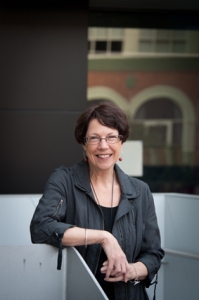Geelong study challenges
Research news
Deakin University has raised its voice on the international stage by challenging a decision to re-define diagnostic thresholds for identifying men with osteoporosis.
More than 1500 men enrolled in the Geelong Osteoporosis Study had a bone mineral density test using dual energy x-ray absorptiometry, known as a DXA scan.
“The DXA scan measures the mineral content of bones and is indicative of bone strength,” said lead investigator Professor Julie Pasco from Deakin University’s School of Medicine and head of the Epidemiology Unit for Healthy Ageing.
“While the bone mineral density test does not foretell with certainty the skeleton’s ability to withstand fracture, it is a clinically useful marker of fracture risk”.
Criteria developed by the World Health Organisation are used to identify people with low bone mineral density (known as osteopenia) and osteoporosis. The definitions involve a comparison of an individuals’ bone mineral density with levels observed for young adults.
“In the past, reference levels were specified separately for men and women, but now there is a move to compare a man’s bone mineral density level to a female reference. This change would impact the diagnosis of osteoporosis in men globally.”
“We have found that if the new criteria were introduced, more men would be regarded as having normal bone mineral density and fewer considered as having osteopenia or osteoporosis.”
“Furthermore, most of the men who sustain fragility fractures would arise from the group with normal bone mineral density, largely because the majority of the male population would be classified in this group as a consequence of the suggested change in diagnostic criteria.”
The Geelong Osteoporosis Study has been studying osteoporosis in women since the mid-1990s and started recruiting men from the Geelong region in 2001. Study participants visit the research centre at Barwon Health every five years to have their health monitored and this includes having a DXA scan. The men were not selected for the study on the basis of osteoporosis – their ages span from 20 to 96, there is a range of body builds, fitness level and health status reflecting the diversity that exists in the community.
“These study findings are unique and will have an international impact. That is what makes the Geelong Osteoporosis Study so special for this region.”
“The project demonstrates how local epidemiological research can be translated into a clinical setting and shape clinical practice across the world,” Professor Pasco said.
The findings were published online this week in the journal Osteoporosis International.
Share this story
 Professor Julie Pasco
Professor Julie Pasco
